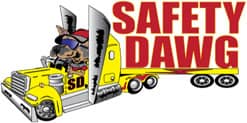It struck me recently that as a Safety Consultant,
I’ve been tweeting a lot regarding lawsuits and their effect on trucking. A wrongful death suit against a trucking company can cost up to $150M.
Meanwhile the chances of being sued seem to be increasing.
One reason for the increased rate of lawsuits is the designation of liability known as Joint and Several Liability. Under this designation when multiple parties are found to be either jointly or individually liable for damages, a plaintiff may collect from any and all of those parties.
What Joint and Several Liability allows,
and some would say encourages, is to sue everybody no matter how remotely associated with the incident. That way, if the person or company primarily responsible can’t pay or if their insurance policy isn’t large enough, and the others named in the suit are considered partially responsible, the victim may be able to collect the entire judgment from the others.
So how does this work? Let me a safety consultant, use a fictitious example of a trucking collision. A shipper posts a load to the internet and a trucking company wins the bid to haul the freight. During the ensuing delivery the truck is involved in a fatal crash. A car fails to stop at an intersection controlled by a stop sign. The truck has the right of way. In the resulting crash the automobile driver is killed and the 16 year old passenger is in a wheelchair for the rest of his life. The car has a $1M insurance policy. I think that many people have only $1M on their cars. In this case, $1M is likely not enough. The monies needed to take care of a disabled 16 year old victim for life would be huge. So who is going to pay?
The young passenger’s attorney would sue everybody involved. This will mean the driver of the car (even though they have passed away), the trucking company, the shipper, the owner of the road or highway and perhaps others, such as the vehicle manufacture of the car. The attorney will want as many named as possible so that if they win the case they will be paid up to the full judgment for the victim.
So let’s look at the trucking company’s involvement. Was the driver operating the truck above the posted speed limit?
As a Trucking Safety Consultant,
I see that operating the truck above the posted speed limit is a common violation. If the speed limit in this example was 80 km/h, and the truck was traveling at a speed of 90 km/h, it is unlikely that the driver would ever get a speeding ticket. However, that does not mean that the truck was operating legally. During the investigation and collision reconstruction, the engine download would reveal the speed. So, if the truck was being operated above the posted speed limit, this may be enough for the driver and trucking company to be found a percentage liable for the crash. It may be a very small percentage, such as 10%. That would be enough for the trucking insurance company to have to pay out a very large sum of money. In this case, because of the age of the passenger in my fictitious example, it could reach policy limits for the trucking company.
Remember, all the plaintiff’s attorney needs to prove is that others contributed to the collision in some negligent way.
A collision does not have to be your “fault” to have serious financial consequences for either the truck driver or their trucking company.
While proper training and regular vehicle maintenance are the best prevention for most incidents, adequate insurance coverage is a must for those circumstances that may fall beyond your control.

